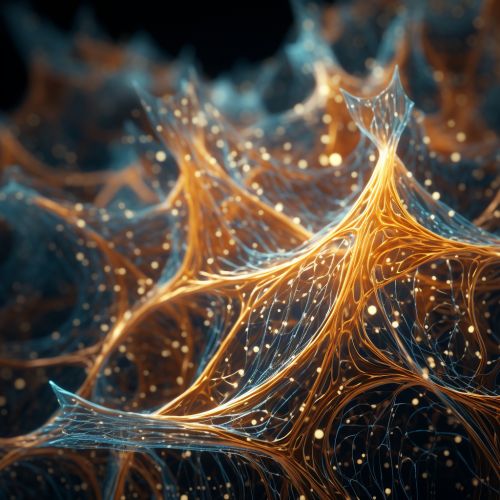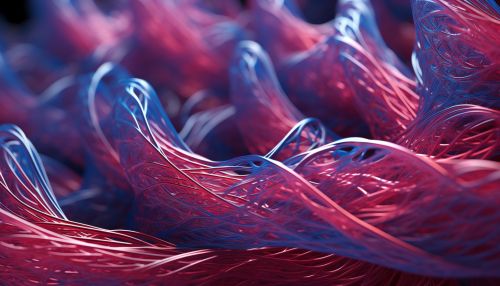Actin
Overview
Actin is a family of globular multi-functional proteins that form microfilaments. It is found in essentially all eukaryotic cells, where it may be present at concentrations of over 100 μM. An actin protein is the monomeric subunit of two types of filaments in cells: microfilaments, one of the three major components of the cytoskeleton, and thin filaments, part of the contractile apparatus in muscle cells.


Structure
Actin has a globular structure and exists in both a monomeric (G-actin) and polymeric form (F-actin), which can coexist in a dynamic equilibrium. The structure of monomeric actin was first determined by Kabsch and colleagues using X-ray crystallography. The monomer is approximately 5.5 nm in diameter and has a molecular weight of approximately 42 kDa. It consists of a single polypeptide chain, which is folded into a globular structure.
Function
Actin participates in many important cellular processes, including muscle contraction, cell motility, cell division and cytokinesis, vesicle and organelle movement, cell signaling, and the establishment and maintenance of cell junctions and cell shape. Many of these processes are mediated by extensive and intimate interactions of actin with cellular membranes.
Actin in Muscle Contraction
In muscle cells, actin filaments are arranged in a parallel fashion, alongside the thicker myosin filaments. The binding of myosin to actin causes the muscle to contract. This process is regulated by troponin and tropomyosin.
Actin Binding Proteins
Actin interacts with a large number of proteins in the cell. These actin-binding proteins, of which over 150 have been identified, regulate actin dynamics and link actin filaments to membrane proteins and to other cytoskeletal components.
Actin in Cell Motility
Actin is also a key component of the cytoskeleton of eukaryotic cells and plays a crucial role in cell motility. This is achieved through a process known as actin polymerization, in which G-actin monomers join together to form F-actin filaments.
Actin in Cell Division
During cell division, actin is involved in the process of cytokinesis. It forms a contractile ring that pinches the cell in two during the late stages of cell division.
Actin in Cell Signaling
Actin plays a role in the transmission of signals from the cell surface to the nucleus. This is important for processes such as gene expression and cell proliferation.
Actin in Disease
Mutations in actin or in the proteins that regulate actin dynamics can lead to a variety of diseases, including muscular dystrophies, cardiomyopathies, and a variety of neurological disorders.
